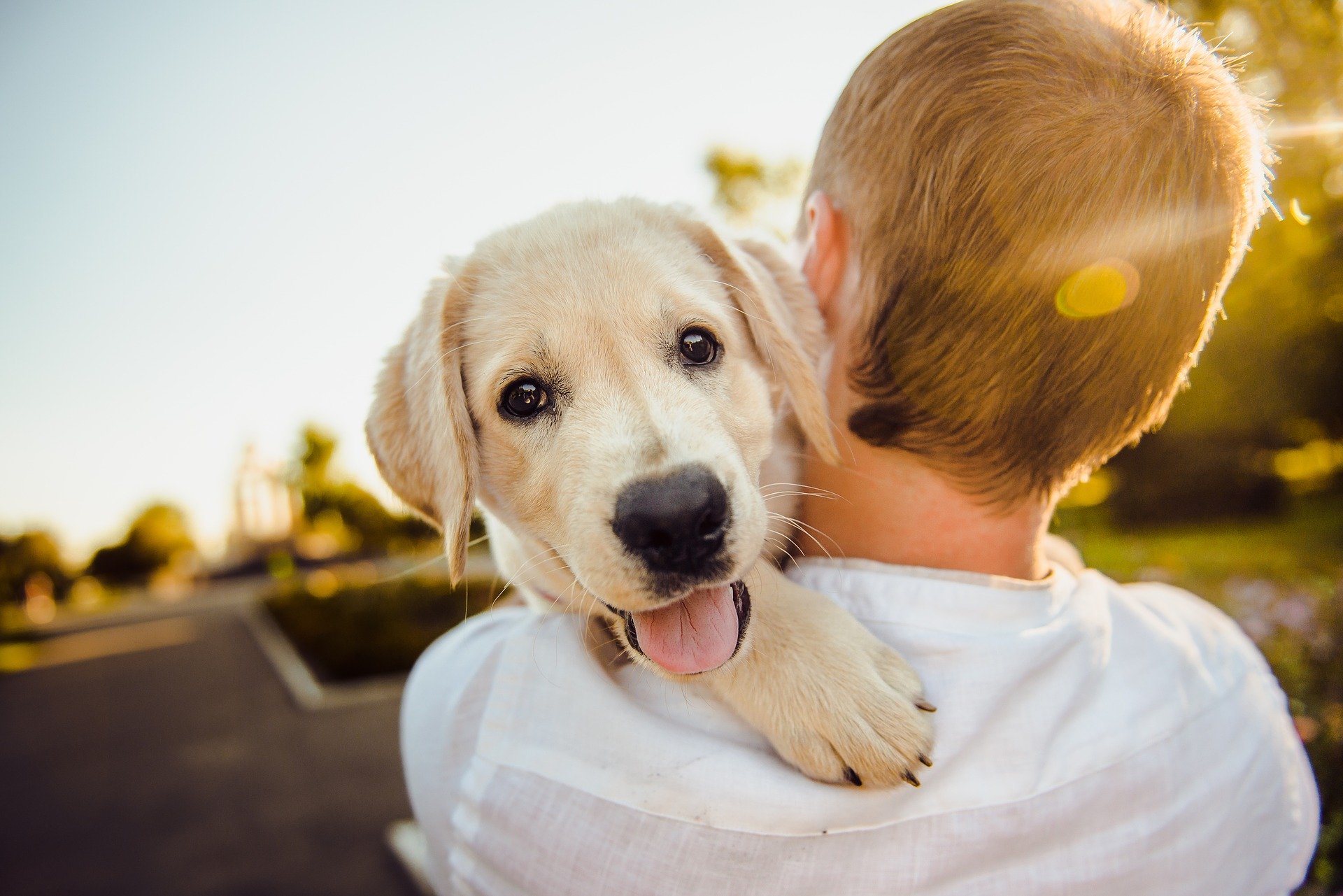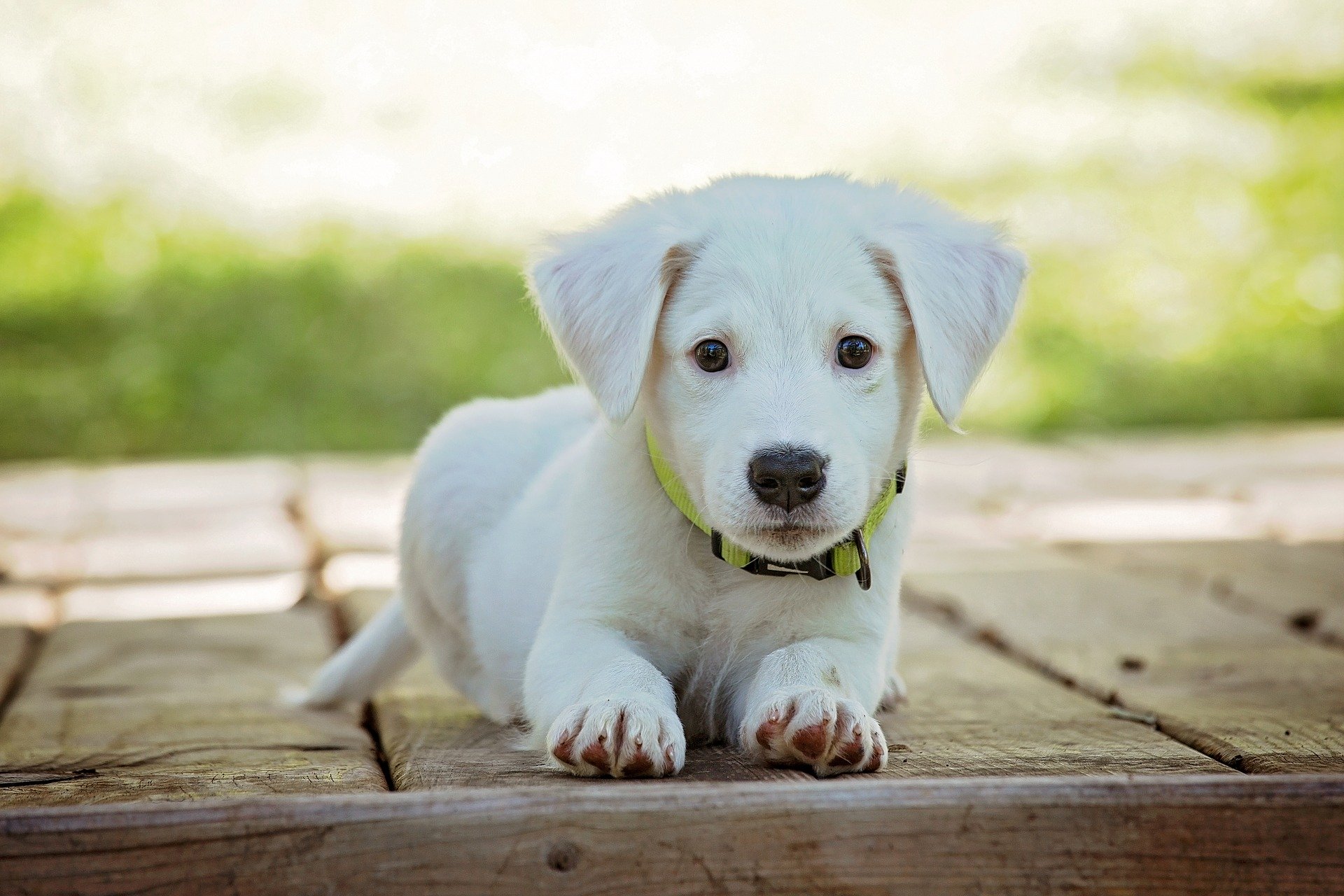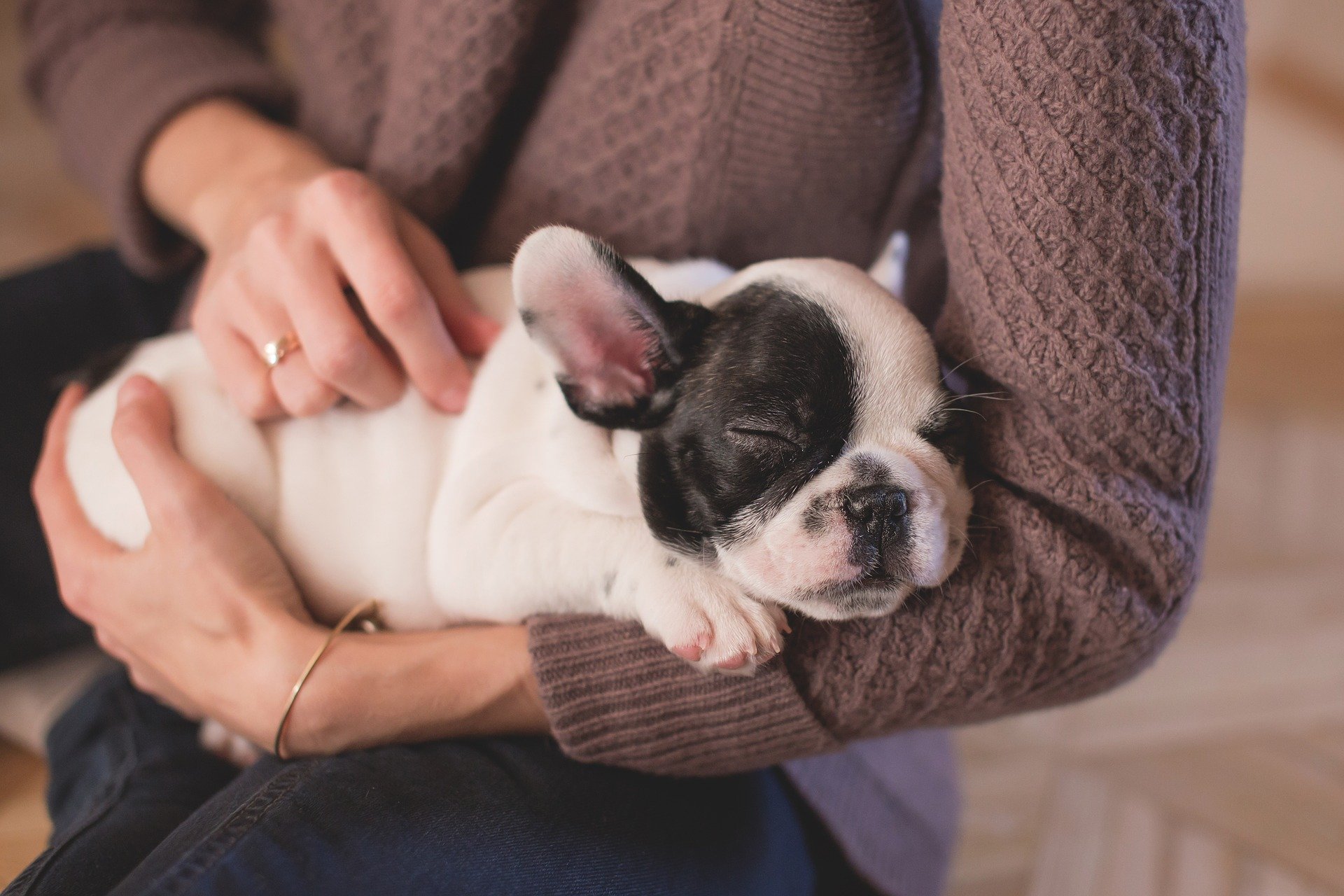 How to Socialize Your Puppy – During and After COVID-19
How to Socialize Your Puppy – During and After COVID-19
This article was written by expert dog trainer, Michele Meyer, during the COVID-19 pandemic because of the concern that puppies are not getting critical training needed due to social distancing. However, this article will still be relevant after the pandemic has passed.
You may be aware of how important it is to socialize your puppy …but did you know there’s a lot more to this than just socializing your puppy with other people and dogs? The COVID-19 pandemic can make it difficult to properly socialize your puppy with people and dogs but there is still plenty of exposure training that you can do with your puppy while maintaining social distancing.
Proper exposure training at an early age helps prevent common forms of canine aggression and anxiety from developing when your puppy gets older. This is some of the most important and beneficial training that can be done for your puppy…and because of the periods of canine development, there is a small window of opportunity to do this preventative training.
Even puppies that have a great temperament can develop aggression, fearfulness, and anxiety related behaviors from lack of proper training. It’s nature vs. nurture…nature is what is bred into your dog such as temperament but nurture is what happens to your dog in his life (or lack there of) that contributes to behavioral issues.
You should socialize your puppy to all different types of people, dogs, environments, noises, surfaces, etc. so that they can develop into mentally stable dogs. It’s very important to do all exposure training at the right pace because fearfulness can also be caused by too much exposure too quickly. The goal is for your puppy to form positive associations with new experiences, sights, sounds, etc. so never force your puppy into a situation that he is afraid of…he should be able to approach at his own pace. Then praise and treat your puppy for exploring new things.
Fear Imprint Periods:
Please be aware of the fear imprint periods in which the initial one is from 8-10 weeks of age. It’s still important to socialize your puppy at this time however, be even more cautious not to overload your puppy or force him into a scary situation that could imprint him for life.
The second fear period occurs between 6-12 months of age and typically lasts up to 3 weeks. Be patient with your pup and continue praising and treating him for exploring and engaging with new things. Never correct your dog when he is nervous…that would only make him more nervous.
 Examples of Exposure Training:
Examples of Exposure Training:
Play videos or recordings of various sounds on your phone such as babies crying, dogs barking, fire trucks, thunderstorms, fireworks, etc. Play them at a low volume for several minutes or more until your puppy is comfortable and then gradually turn the volume up…allowing your puppy to acclimate to each increase in volume before increasing again.
You can socialize your puppy by varying your walking paths and taking your puppy for car rides so that he can get used to different environments, sights, and sounds. Just be careful of where you bring your puppy before he is fully vaccinated. Puppies should have at least two rounds of vaccines before exposed to areas where other dogs may have toileted.
Praise and treat your puppy for walking on different surfaces (that are safe for your puppy) on your walks and in your home. For example, you could take a bath mat and turn it upside down and lure your puppy to walk over the mat with a treat. Be careful doing this exercise with the underside of carpet runners…as some of them are very sharp!
You can also use a treat to lure your puppy over, under, and through SAFE obstacles on your walk and in your home. For example, have your puppy walk through hula hoops or over a broom lying on the floor or create a tunnel with a blanket over ottomans and lure your puppy through. You may need to start with a partially closed tunnel by leaving an opening between the floor and sheet so that your puppy can easily see his way to the other side. Just remember to never force your puppy with any of these exercises. Let him move at his own pace.
Get your puppy used to things that move…skateboards, strollers, bikes, suitcases, vacuums, motorized toys, etc. Always start with these items a good distance away from your puppy and moving in a direction away from your puppy…don’t move them toward your puppy. Get your puppy used to you sweeping in a motion away from your puppy. If the items also make noise, then first start without the noise. For example, get your puppy used to the vacuum moving when it is not on and also get your puppy used to the noise of the vacuum when it is stationary before moving the vacuum while it is on.
Acclimate your puppy to safe, new objects like an umbrella. First have the umbrella already open in the far end of the room before bringing your puppy into the room. Praise and treat him for exploring the new object. After he is comfortable with the umbrella, then let your puppy see someone open the umbrella from at least 10 feet away and in a direction away from the puppy. Once your puppy is okay with that, then have the person walk around holding the umbrella over their head as they would when it’s raining….get the idea? Just introduce things gradually.
Socialize your puppy by dressing up in costumes…start by wearing just a hat or glasses at first and then combine them. Then add a scarf, then a coat…again, gradually so you don’t scare your puppy. It would be a very good idea to get your puppy used to people wearing face masks if they aren’t already…since they are very likely to be exposed to this during COVID-19.
Teach your puppy that people walking with canes, crutches, or a limp are not scary by getting your puppy used to seeing you walk around the house this way. If you don’t have a cane, then you could use a something like a baseball bat as a pretend cane.
Socializing with People and Dogs:
You may have heard it’s important to socialize your puppy with other dogs and this can be more difficult now during the COVID-19 pandemic…but when you are able to…do you know how to do so safely? Which dogs are safe to socialize with? On leash or off leash? Just one bad experience can traumatize your puppy for life…especially if it happens during the fear imprint period. Our puppy programs will teach you the best way to socialize your puppy.
For now, remember you can still start creating positive associations with other dogs and people while maintaining social distancing by giving your puppy some treats and lots of praise when you see people and dogs on your walks. Make sure your puppy has sufficient immunity from vaccinations before letting him interact with other dogs. Puppies should have at least two rounds of vaccinations before interacting with other friendly dogs that you know are healthy…such as in a good puppy class where the trainer has carefully checked all puppies’ health records. It’s best to wait until your puppy is fully vaccinated (usually around 16 weeks of age) before letting him come in contact with dogs you do not know.
 More Important Puppy Training:
More Important Puppy Training:
Early training should also be done with puppies to prevent aggression around resources such as food, toys, dog beds, furniture, people, etc…even more important if your dog will be around young children!
Training should be done when puppies are young to prevent them from developing separation anxiety… so you don’t have to worry about your dog destroying your home or harming himself when left alone. (See our article on this)
Handling exercises should also be started very early with puppies so that they don’t become aggressive when someone touches them in sensitive areas such as with grooming or medical attention. Too many dogs experience high levels of stress at the veterinarian’s office and have to be muzzled or even put under just to have a simple procedure done. Proper training at a young age will help make these situations less stressful for both your puppy and the handler whether that is you, your veterinarian, groomer, or pet sitter.
Does your puppy bite the brush when you try to brush him? How about when it’s time to wipe those paws after coming inside? Is your puppy chewing at the towel or trying to get away? Those are all things that should be addressed early with proper training before it becomes even more problematic.
What happens when your dog gets an ear infection or eye infection….will you be able to administer the medicated drops without your dog fighting you or running away? What about changing your dog’s bandage if he is injured?
Did you know that you should brush your dog’s teeth? Without early preventative training, brushing your dog’s teeth can be an unpleasant battle for you and your pup.
What about those nails? Even if you plan to let the groomer or veterinarian trim your dog’s nails…this can be stressful and dangerous for your dog if he is not trained to lay still for this procedure.
Not sure where to start? Don’t worry, we can help you!
Critical Training Period:
So as you can see, there is a lot that can be done to properly socialize your puppy. Teaching basic cues and house manners is also important to start with your puppy as soon as possible…but it is critical for your puppy’s development to start proper exposure training very early. Since puppies shouldn’t be separated from their mother and littermates before 7-8 weeks of age, they are ready to begin this training as soon as they have settled into your home…typically a few days after you bring them home.
Puppies grow quickly and those not so good behaviors that sometimes may even seem cute can become very problematic when your puppy is full grown. Practice makes perfect and that goes for undesirable behaviors too so time is of the essence. We can help with training your puppy so that you can enjoy a mentally stable and well-trained dog for many years to come!
We are still here for you during COVID-19. Our expert trainer, Michele Meyer, can help you train your dog with live online sessions that are fun and easy…no tech skills required! You can also talk with our trainer by phone and we are taking careful safety precautions for in-person sessions. Please see the COVID-19 updates throughout our website for more details.
Just get in touch today and tell us about your puppy. We look forward to hearing from you!
